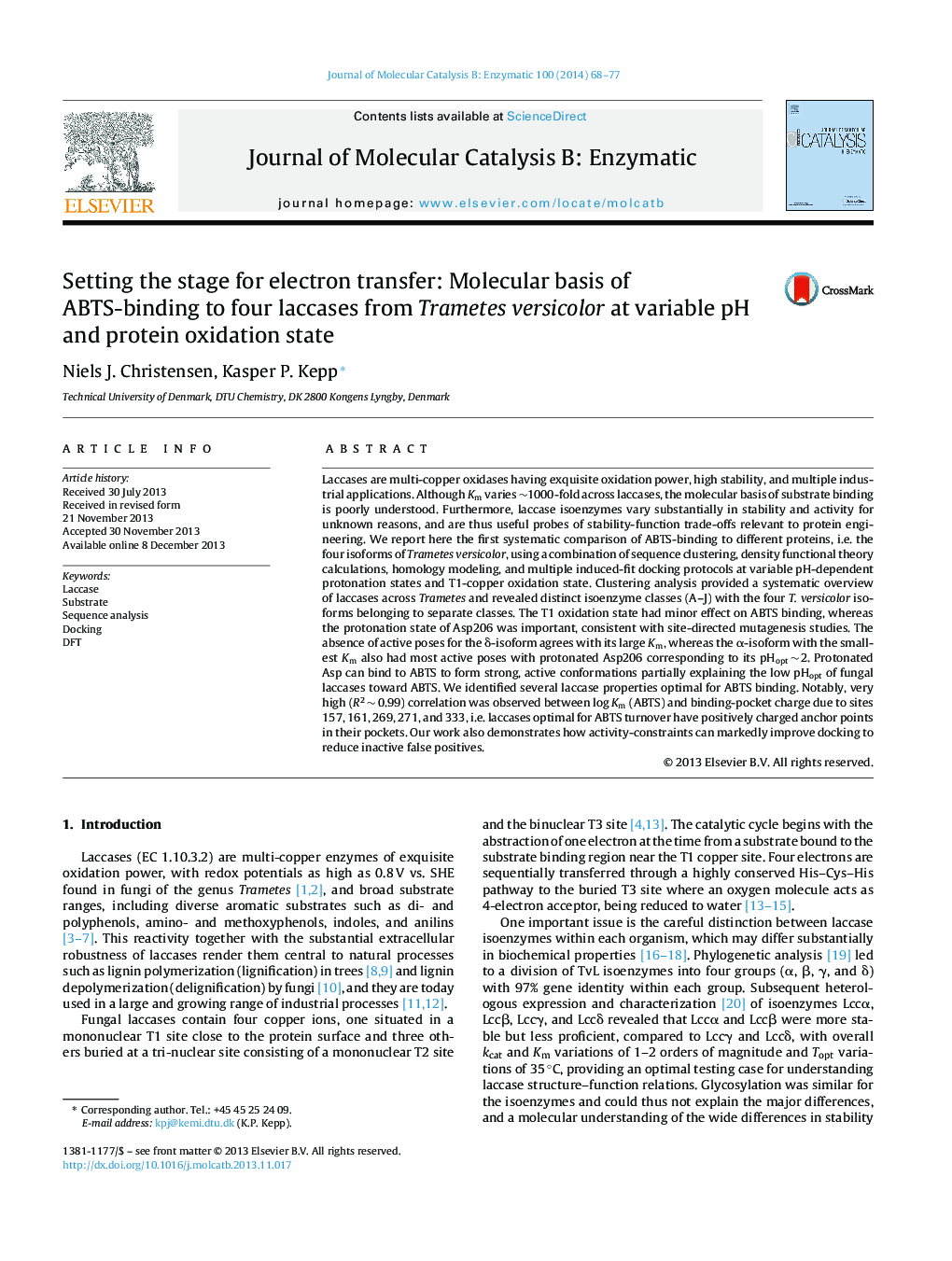| کد مقاله | کد نشریه | سال انتشار | مقاله انگلیسی | نسخه تمام متن |
|---|---|---|---|---|
| 69767 | 48791 | 2014 | 10 صفحه PDF | دانلود رایگان |

• The molecular basis of Km variation across laccases was explored.
• Clustering analysis revealed distinct classes of Trametes laccases.
• Our results partially explain the low pHopt of fungal laccases toward ABTS.
• Laccases optimal for ABTS turnover have positively charged sites in their pockets.
• This work shows how activity-constraints improve docking by reducing false positives.
Laccases are multi-copper oxidases having exquisite oxidation power, high stability, and multiple industrial applications. Although Km varies ∼1000-fold across laccases, the molecular basis of substrate binding is poorly understood. Furthermore, laccase isoenzymes vary substantially in stability and activity for unknown reasons, and are thus useful probes of stability-function trade-offs relevant to protein engineering. We report here the first systematic comparison of ABTS-binding to different proteins, i.e. the four isoforms of Trametes versicolor, using a combination of sequence clustering, density functional theory calculations, homology modeling, and multiple induced-fit docking protocols at variable pH-dependent protonation states and T1-copper oxidation state. Clustering analysis provided a systematic overview of laccases across Trametes and revealed distinct isoenzyme classes (A–J) with the four T. versicolor isoforms belonging to separate classes. The T1 oxidation state had minor effect on ABTS binding, whereas the protonation state of Asp206 was important, consistent with site-directed mutagenesis studies. The absence of active poses for the δ-isoform agrees with its large Km, whereas the α-isoform with the smallest Km also had most active poses with protonated Asp206 corresponding to its pHopt ∼ 2. Protonated Asp can bind to ABTS to form strong, active conformations partially explaining the low pHopt of fungal laccases toward ABTS. We identified several laccase properties optimal for ABTS binding. Notably, very high (R2 ∼ 0.99) correlation was observed between log Km (ABTS) and binding-pocket charge due to sites 157, 161, 269, 271, and 333, i.e. laccases optimal for ABTS turnover have positively charged anchor points in their pockets. Our work also demonstrates how activity-constraints can markedly improve docking to reduce inactive false positives.
Figure optionsDownload as PowerPoint slide
Journal: Journal of Molecular Catalysis B: Enzymatic - Volume 100, February 2014, Pages 68–77